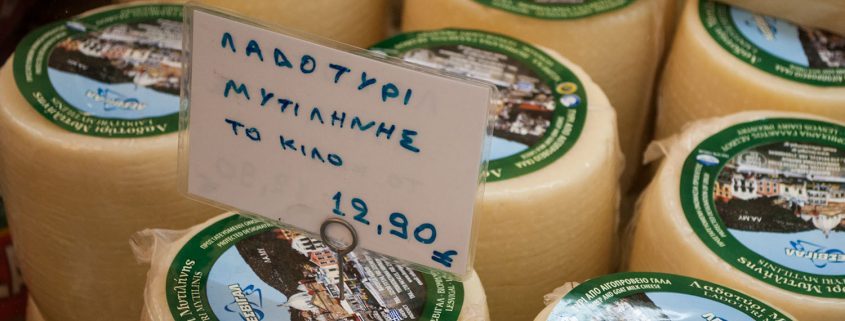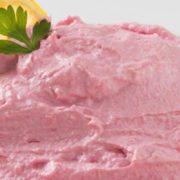Do you also love cheese?
When you visit another country, it is always part of the fun to also explore the local cuisine, or…trying the locally produced cheese.
Often foreigners visiting Greece only have heard of or tasted the Greek “feta cheese”, but today Greece produces a wide variety of cheeses, all of excellent quality. Nearly every region or province in Greece produces its typical cheese.
Greece has a century-old cheese-making tradition, so it will be easy to discover that Greek cheese includes more than just Greek feta. Below we mention some delicious Greek cheeses you should try on your next trip to Greece.
Have a look at a typical cheese shop in centre Athens:
The cheese making production is not new in Greece, but exists since ancient times. Even in Greek Mythology, the God Aristaeus, son of Apollo and huntress Cyrene, was the one teaching the dairy skills, amongst which also the art of cheese making. Greek cheese does not only play a role in Greek mythology and history…
Greek cheeses are made of cow milk (ageladino gala “αγελαδινό γάλα”), goat milk (katsikisio gala “κατσικίσιο γάλα»), and sheep milk (provio gala “πρόβειο γάλα»).
Greece applied to the European Union for 25 traditional Greek cheeses to be included in the “Protected Destination of Origin -products list” (PDO). Twenty one of these, listed below, were accepted and another four applications are pending. You can find the entire list of PDO cheeses below (known as POP in Greek, “prostatevomeni onomasia proelefsis”).
In Athens you can find many shops specialized in all those cheeses. A good area to find those shops is in central Athens, around Evripidou street. Cheese is also used for delicious traditional Greek recipes.
A few examples:
Saganaki
Traditionally, Greek saganaki is made with hard yellow cheeses such as graviera, kefalograviera, and kefalotyri. Saganaki is prepared by dredging a thick slice of cheese in flour and baking it in an oily pan until golden brown. With some cheeses like the Cypriot halloumi or mastello from Chios island you can bake or grill the cheese without using flour. Just before serving the warm Saganaki, put some fresh lemon juice on it and eat it with a piece of bread.
Tiropita
Very known also for tourists, is the delicious “tiropita”, which means cheese pie. The name comes from “tiri” (cheese) and pitta” (pie, or dough). It is made with philo dough and feta cheese. Greeks eat it at any time of the day, from morning to evening.
Tirokafteri
Tirokafteri is a typical starter/side dish that you will often find on the menu of a Greek tavern. The name comes from “tiri” (cheese) and “kafteri piperia” (spicy pepper). It is a thick, spicy cheese-spread, made of soft feta, yoghurt, manouri cheese, spicy pepper and olive oil. There are also different versions, made with other cheeses.
Tip: whenever you are in Greece, try some of the local cheeses and combine it with the excellent Greek wines . Let us know which cheese is your favorite. Kali orexi! Καλή όρεξη!
The PDO list of Greek Cheeses:
1. Anevato – a soft grainy white cheese made from a mix of sheep’s and goat’s milk from the prefecture of Grevena and the province of Boiou in the prefecture of Kozani
2. Batzos – a salty semihard-to-hard cheese, stored in brine that is produced in western and central Macedonia and Thessaly
3. Feta – Greece’s national cheese produced in Macedonia, Thrace, Epirus, Thessaly, Mainland Greece (Sterea Ellada), the Peloponnese and Mytilini
4. Formaela Arachovas – a semi hard cheese made from sheep’s and goat’s milk, produced in the region of Arachova, Mt Parnassos
5.Galotyri a soft, creamy cheese produced in the Epirus and Thessaly regions from sheep’s milk, or a combination of sheep and goat milk
6. Kaseri a semihard cheese made from sheep’s milk, or combination of sheep and goat milk. it is produced in in the Epirus and Thessaly regions.
7.Graviera Agrafon – produced in the mountainous regions of Agrafa (western Thessaly/ Evritania) from sheep’s milk or in combination with goat’s milk
8.Graviera Kritis – produced from sheep’s milk in Crete. When goat’s milk is added, its percentage may not exceed 20 percent of the total
9. Graviera Naxou – produced on the island of Naxos in round forms from pasteurized cow’s milk or mixtures that include a small percentage of sheep’s and goat’s milk, the total percentage of which must be under 20 percent
10. Kalathaki Limnou – a brine cheese, produced on the island of Limnos from sheep’s milk or in a combination with goat’s milk, which should not exceed 30 percent. Its name “kalathaki” means a “basket” and it comes from the shape that the cheese gets when left to mature inside knitted wicker baskets for about 60 days.
11. Katiki Domokou – a creamy white cheese, with a soft, slightly sour flavor produced on the Mt Orthrys plateau, in the region of Domokos, from sheep’s milk, goat’s milk or a combination of both
12. Kefalograviera – produced in the regions of western Macedonia and Epirus and the prefecture of Aitoloakarnania from sheep’s milk or a combination with goat’s milk, which should not exceed 10 percent of the total
13. Kopanisti – a creamy cheese with a strong salty and peppery taste, produced in the Cyclades islands from sheep’s, cow’s or goat’s milk or a combination of these.
14. Ladotyri Mytilinis – produced on the island of Lesvos from sheep’s milk or in a combination with goat’s milk, the latter not exceeding 30 percent of the total. It is stored in olive oil, which is why it is called ladotyri (oil cheese)
15. Manouri – a curd cheese produced in Thessaly, central Macedonia and western Macedonia from sheep’s milk or in combination with goat’s milk
16. Metsovone – a semihard smoked cheese produced from sheep’s, cow’s or goat’s milk or their mixtures, in the Metsovo region (Epirus)
17. Pictogala Chanion – a white table cheese produced in the prefecture of Chania, Crete, from sheep’s milk, goat’s milk or a combination of both
18.San Michali – a hard yellowish cheese produced from pasteurized cow’s milk from locally grazing cows on the island of Syros
19.Sfela – a semi hard brine cheese, also known as poor man’s feta, produced in the prefectures of Messinia and Lakonia from sheep’s milk, goat’s milk or a combination of both
20. Xinomyzithra Kritis – a soft, creamy curd cheese that is produced in Crete from sheep’s milk, goat’s milk or a combination of both
21. Xigalo Siteias a soft cheese made with goat’s or sheep’s milk, or a mixture of the two. It is produced in a small area located in the easternmost area of the island of Crete.
For your information : Greek cheese goes well with Greek wine of course.
Read more about the variety of Greek wines in our Blog article.
Enjoy your meal! Καλή όρεξη!









